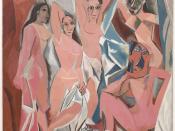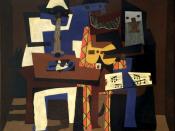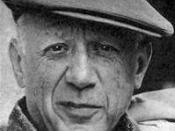Pablo Picasso was probably the most influential modern painters of the 20th century. Born in Spain, he lived in France much of his life painting, sculpting, making ceramics, and doing graphic artwork. His style was quite avant-garde and unique, and he changed it many times during his career. Picasso was one of the artists to lay the foundations for Cubism, a style that used angular, cube-like structures to depict people and things. He loved to shock the public with his strange, powerful paintings, drawings, prints, and sculptures. Picasso was among the first to make collages by pasting material onto the canvas.
Before his 50th birthday, the Spaniard from Malaga had become the very prototype of the modern artist as public figure. No painter before him had had a mass audience in his own lifetime. Picasso's audience--meaning people who had heard of him and seen his work, at least in reproduction--was in the tens, possibly hundreds, of millions.
He and his work were the subjects of analysis, gossip, dislike, adoration and rumor. He was a superstitious, sarcastic man, sometimes rotten to his children, often mean to his women. He had contempt for women artists. His famous remark about women being "goddesses or doormats" has rendered him odious to feminists, but women tended to walk into both roles open-eyed and eagerly, for his charm was legendary.
He was also politically lucky. Though to Nazis his work was the epitome of "degenerate art," his fame protected him during the German occupation of Paris, where he lived; and after the war, when artists and writers were thought disgraced by the slightest affiliation with Nazism or fascism, Picasso gave enthusiastic endorsement to Joseph Stalin, a mass murderer on a scale far beyond Hitler's, and scarcely received a word of criticism for it, even in...


